Torque is a measurement of rotational force that is applied into or against an object. This measurement has many benefits, one of which includes the ability to measure the amount of torque for particular bolt size.
A common use for a torque wrench is with automobiles. Automobiles have specific torque requirements, and using a torque wrench is the best way to ensure the proper level of torque has been reached.
However, some people may wonder if it is possible to use a torque wrench to loosen bolts as well?
In this blog post, we’re not only going to provide an answer to your question but other related topics.
Read on!
Table of Contents
Can Torque Wrenches Be Used for Loosening Bolts?
Although torque wrenches are primarily fitted for tightening bolts and fastening, they can actually be used to loosen bolts equally.
While it is not technically advisable to use torque wrenches for operations in the opposite direction, there is still that possibility of using them for loosening bolts.
In using torque wrenches for such kinds of operations, they have a particular torque limit that you must not go beyond.
Bolts require a good amount of torque in loosening them. In using torque wrenches to loosen bolts, one has to be very careful as the torque limit must not be exceeded.
If exceeded, the torque wrench loses its precise capabilities and will no longer be useful. So, it is not advisable to use them for loosening bolts, even though it is possible.
How do I go about using a torque wrench to loosen a bolt if I have no feasible option in place?
In using your torque wrench to loosen your bolt, something of utmost importance is to not overextend the tool or exceed the maximum torque.
To make the process of loosening the bolt easy for the tool, the best practice is to apply some form of pressure using a heat source.
You could also use penetrating oil for corroded bolts. Putting all these considerations in place will help you loosen the bolts without causing any damage to the tool.
So, let’s take a look at a step-by-step approach to using a torque wrench to loosen a bolt.
- Endeavor to inspect the wrench thoroughly for any damages.
- The next thing to do is to unlock the tool to adjust the settings.
- The direction of the wrench has to be adjusted.
In order to use the wrench for removing a bolt rather than fastening it, the wrench has to be adjusted to move in a direction opposite to the one it usually moves in. So, the wrench needs to be set for anti-clockwise rotations.
- Check the required torque range properly.
Ensure to check the instruction of the manufacturer so as not to exceed the maximum torque required.
- Set the wrench from low to high as it will need the highest torque available.
- Lock the torque wrench.
- You are to fix the appropriate socket to the wrench’s end so as to connect to the bolt.
You are to ensure that the bolt is held tightly to the extension you have picked.
- Turn the handle of the wrench in a counter-clockwise direction.
Repeat this process until the bolt loosens. Be careful not to overturn the tool.
So, what then are the most preferable tools to use in loosening bolts?
Open Wrench
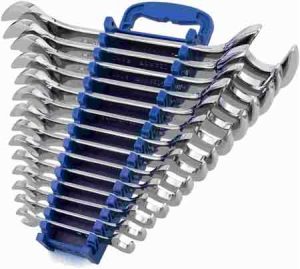
An open wrench has a u-shaped head at either end of a handle. The heads actually come in two different sizes and this is to allow you to work on different sizes of bolts or nuts with one wrench.
This wrench is a perfect fit for reaching bolts or nuts in difficult places as it has a very high chance of slipping off the nut or bolt.
To use an open wrench, you must first identify which side of the wrench will be a good fit for the task you want to use it for.
You must ensure that the jaws of the wrench are in very firm contact with the head of the bolts.
The bolt should be well into the U shape of the wrench jaw. To loosen a bolt with this wrench, turn it counter-clockwise.
Sometimes, you can rotate the wrench in a full cycle. However, you must ensure that you reset the jaws of the wrench after each turn.
Rotate the wrench well, and remove the jaws from the bolt. Place the jaws back on the bolt and rotate the wrench again. Continue with this process until the bolt is loose.
Box Wrench
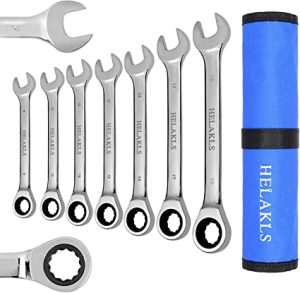
This is quite similar to an open wrench. The difference is that the box wrench has a ring-shaped head on either side of the handle.
Just like that of the open wrench, the sizes of both heads are different and this is to allow for multiple uses of the tool.
Box wrenches allow a firmer contact on the bolt head than an open wrench. This contact actually allows for a harder grip on the bolt which reduces the likelihood of the wrench slipping off the head of the bolt.
To use a box wrench, you must also identify which side of the wrench will be a good fit for the bolt you want to use it for.
Insert the bolt now into the jaws of the box wrench and ensure it is firmly in place. To loosen a bolt, turn the wrench counter-clockwise.
Combination Wrench
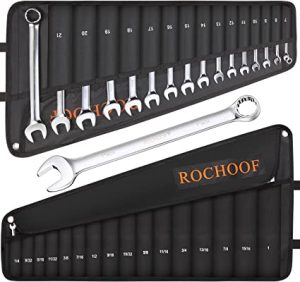
A combination wrench as the name implies combines the open wrench and the box wrench into one.
One of its heads has a U shape while the other is ring-shaped. The heads of this kind of wrench are actually of the same size.
The combination wrench actually offers you the benefits of both the open wrench and the box wrench all in one piece.
You can use the box end to loosen a very tight bolt and then, the open end can be used for reaching difficult places.
Crescent or Adjustable Wrench
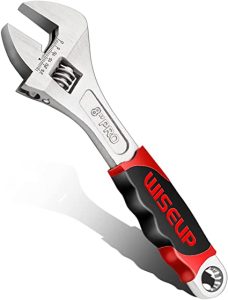
This kind of wrench actually has a peculiar jaw as it is adjustable. The jaw allows you to use the wrench for different sizes of bolts.
With a crescent wrench, you do not need to work with the specifics of sizes. You can simply adjust the jaw to fit whatever bolt size you are working with.
A crescent wrench actually has a warm screw slightly above the handle for you to work with. This warm screw can be turned to either increase or decrease the width of the jaws.
To use a crescent wrench, you must ensure that the wrench is adjusted to fit whatever bolt size you want to work with. Twist the screws until the jaws are a little bigger than the bolt and then, you can insert the bolt inside the jaws of the wrench.
Once the bolt is in the jaws of the wrench, turn the screw to tighten the jaws to the bolt. Once the jaw is tight around the bolt, you can start loosening the bolt.
Remember to rotate counterclockwise to do that. In rotating the wrench, ensure that the force is directed to the fixed jaw.
Socket Wrench
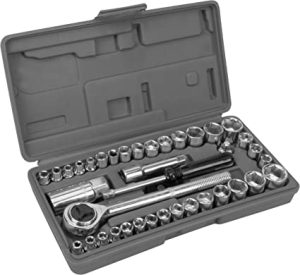
The socket wrench comprises a handle, a square extension coming out of the head, and a socket. Sockets allow you to hold different firm sizes of bolts or nuts.
The socket locks to the square extension on the wrench head, and then the head of the bolt can be inserted into the socket.
The socket wrench functions in the same manner as the box wrench. The bolt head will be placed to fit into the socket.
Although, unlike the box wrench, you can swap the sockets for different sizes of bolts. This makes the socket wrench a very versatile tool.
A socket also has a ratchet, making it easy to loosen bolts quickly. You do not need to reset the wrench’s head with each pull in a socket wrench.
The socket does not turn the bolt as you return to the starting point. The ratchet only turns the bolt when you rotate towards a specific direction.
A socket wrench loosens the bolt based on the setting of the knob. To change the direction of the turn of the socket, flip the knob on the wrench’s head.
To change the socket to another size, you have to remove the socket in the wrench. To do that, press the release button on the back of the wrench, pull the socket away, and it will come off.
To add a new socket:
- Press the release button on the back of the wrench.
- Slide the socket into the square extension.
- Release the button when the socket is tightly fit to the wrench.
- Do well to confirm if it is in place.
In using a socket wrench, ensure that the size of the socket you are working with tallies with the size of the bolt in question. Set the direction of the knob such that it is in a loosening position.
Press the socket to the bolt to ensure a firm grip. The next thing to do is have the socket rotated counter-clockwise to loosen the bolt. When you notice that you cannot rotate further, return to the start position. Then, turn again.
Before using a wrench, ensure you inspect for any damages. You should not use a damaged, bent, or cracked wrench as it could cause serious injuries. It is recommended that the wrench should not be used on moving machinery.
What then is a perfect scenario for using a torque wrench?
A torque wrench will work in a reverse position as it is most preferable for tightening bolts instead of loosening them.
A torque wrench is a more precise tool than some other devices are. Due to this specificity, torque wrenches will only turn in one direction, limiting their functionality compared to their other counterparts.
The direction that the torque wrenches move-in is clockwise.
In using a torque wrench, you must know that applying too much torque can damage the bolt, and applying too little could weaken the fastener. To use a torque wrench, it’s important to have the handle adjusted and set to a specific torque level.
Please use the tightener on the end of the handle to lock it in place. You should then fit the bolt over the socket and turn it clockwise to tighten it.
After use, turn the settings on the handle back to zero and store it somewhere safe.
A torque wrench is best used when you do not want to tighten a bolt over, and that is why they are used when working on engines. An over-pulled bolt can cause a crack in a machine.
Is it appropriate to use a ratchet to loose lug nuts?
Ratchets are a perfect tool for removing the lug nuts of a car tire. Lug nuts are usually for securing tires to a vehicle, and they need to be loosened and eventually removed whenever you want to remove a tire or do some form of repairs on your car.
In replacing a flat tire, the ratchet, alongside other tools, is used in a combination process to disengage the tire and replace it.
A ratchet and socket in the toolbox in your vehicle can then be used to loosen the lug nuts on the tire that are to be removed in a counter-clockwise turn. The ratchet to be used can either be two crossed or straight bars.
It is worth noting that the crossbars provide extra strength as you can quickly grab onto either side with your hands and rotate.
And in cases your lug nuts get stuck from rusting or over-tightening, you can make use of either a breaker bar or hammer.
Final Thoughts
Undoubtedly, quite a number of tools can be used for different purposes, and a torque wrench is not one of them.
However, having a good set of torque can be helpful in projects.
Some builds require a certain level of torque to keep the fasteners in place for safety purposes, and it can be tough tightening the nuts and bolts.
Nonetheless, these torque wrenches have it all figured out if used the way they are meant to be used.
Related topics:
- How Do You Puncture A Car Tire Quietly
- 245 vs 265 Tires
- Does a Bent Rim Affect Alignment
- How to Remove Skunk Smell from Car Tires

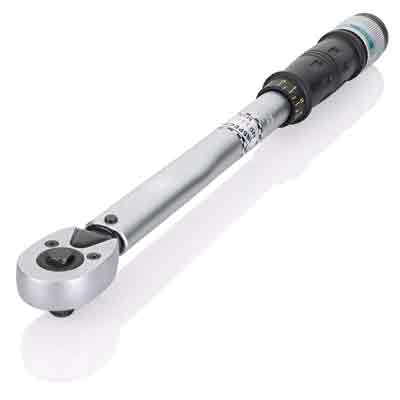
1 thought on “Can You Use a Torque Wrench to Loosen Bolts”